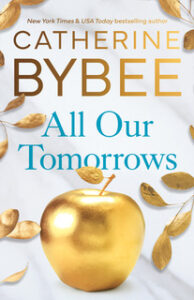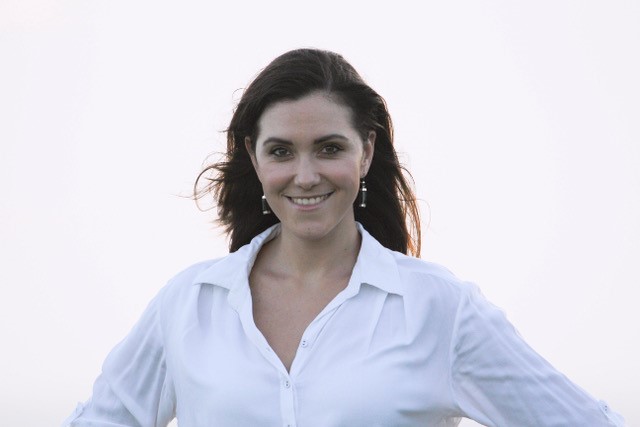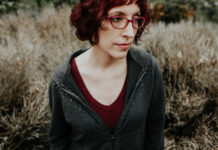We’re welcoming Sofia Robleda to the blog today to talk about her debut release DAUGHTER OF FIRE.
What inspired you to write DAUGHTER OF FIRE and what did your journey to
publication look like?
In 2018 I asked for a DNA test as my Christmas present. By this point in my writing career,
I’d written two fantasy novels and had received hundreds of rejections, but I didn’t want to
give up on my dream to become an author. The results took months to come, and as I’d
expected, the majority of my “blood” was European/Spanish. What I didn’t know, is that I
also had a fair percentage of Indigenous “New World” blood, as they called it. I started
reading more about our native history, especially about the Mexica and the Maya. Growing
up in Mexico City and Cancun, we’d been exposed to a lot of the awesome parts of those
civilizations, but I wanted to know the real stories. Not just the stuff they teach you in
school. When I came across the fact that a bishop in Yucatan had burned thousands of Maya books, and only four had survived the conquest, I felt deep in my bones that I needed to tell this story. It took five years to research, write the book, find my wonderful agent, and get a publisher!
You did a lot of research for this book, including traveling to Guatemala, speaking with Professor Christenson who translated the Popol Vuh, etc. Discuss how you approached the research for the novel and what you learned that you found especially surprising in your research.
I went a bit wild researching this novel to be honest! I visited half a dozen museums, read
countless books, travelled solo across the world to Guatemala to climb pyramids, traverse
jungles and explore underground caves. I also got support from Professor Allen J.
Christenson to ensure the words I used in K’iche’ Maya were correct. He gave me the most
thorough and incredible notes, and I’m so grateful, because above all I wished to show my
complete respect and reverence for the original authors of this manuscript & the K’iche’ Maya people. What struck me the most from my research, was that the Popol Vuh codex has never actually been found. What we have is a copy made by a friar in the 18th Century, who copied both the K’iche’ text, and added a translation to Castilian. His work is now in the Newberry Library in Chicago. I really hope to be able to see it in person one day!
How did your background influence the writing of the novel?
I spent most of my childhood in Mexico, and my parents really inspired us to appreciate our
prehispanic heritage. I clearly remember going every year to Chichen Itza to witness the
summer solstice. Back then, you could still climb the pyramid, and I remember thinking how from the top looking down, people looked like tiny ants. We had picture books with Aztec and Maya myths, so it was something I grew to love from an early age. But we left Mexico when I was ten – my father was an airline pilot, and he got a job in Saudi Arabia. From that moment, I was sort of split, my heart was Mexican, and it always will be, but my experience as a Third Culture Kid meant I didn’t fully belong to Mexico anymore. Then again, I could also never call myself Saudi, or Singaporean, or Australian. In the end, that feeling of being an outsider, an observer, of having a foot in two worlds, also connected me deeply to Catalina, who lives with that duality.
Why did you incorporate elements of magical realism in this historical novel?
Magic, mysticism, myths, ghost stories, superstitions, religion, miracles, curses, the occult… they are part and parcel of growing up in Latin America. My grandmother used to be part of a group of mediums, my grandfather and his family used to play the Ouija board in family reunions (the stories are hair-raising), my mother has visited more fortune tellers than I can count, as have my cousins and aunts. Even I have gone to a few! There is simply no way of leaving those elements out. I also started out writing fantasy novels, so I think really, I just love it. I don’t know how to write without magic. Writing and reading is magic to me. It’s beautiful how you can conjure an entire world, and telepathically convey it to someone who is halfway across the globe!
What steps did you take to ensure K’iche’ Maya elements of the story and the K’iche’ Maya characters were represented accurately and respectfully?
This was an essential question I took incredibly seriously. Even though I have Indigenous
ancestry, I cannot claim to be K’iche’ Maya. I think first and foremost, it was important that
all my characters were fully fledged, complex, and realistic, with goals, dreams, and
emotional depth. I didn’t want to have caricatures or stereotypes. Many of my characters,
including Lord Juan and Cristobal, were also based on real historical people, so I wanted to
pay my respects to their memory by researching about them as much as I could. In terms of the language and K’iche’ terminology, as well as other elements I also sought help from
Professor Allen Christenson, who translated the Popol Vuh to English, visited the Popol Vuh
museum in Guatemala City, and read A LOT of books.
Are any of the characters in the novel based on real people?
Almost all my characters are based on real people, Bernal Diaz is the best known of them,
thanks to his memoirs. Don Alonso Lopez de Cerrato was also real and was the President of
the Audiencia of Guatemala. I later found out he did have a daughter called Catalina!
Although the Catalina in my novel is completely fictional, as is her mother. Both K’iche’
Lords, Juan Rojas and Juan Cortes and Cristobal Velasco, were also real. Cristobal is the only character who is thought to actually have been involved in writing down the Popol Vuh. Poor Nicolao was also real, and he did in fact get punished the way he is in the novel (no spoilers here) for trying to seduce Don Alonso’s niece (or granddaughter, the records are unclear). Judge Ramirez was also real. He was, in fact, a notorious philanderer, and he DID try to stab Bishop Marroquin in the cathedral!
What are you working on now?
I am halfway through writing my next novel, a YA historical fiction called THE OTHER
MOCTEZUMA GIRLS, which is also set in the same era as DAUGHTER OF FIRE. The
manuscript weaves the story of Isabel Moctezuma, who was the last empress of Mexico when the Spanish invaded. In real life, she not only survived the conquest, but became one of the wealthiest landowners in New Spain, leaving behind a will, and seven children. In my story, I imagine she also leaves a second account, the true testament of her life, and all the secrets she kept hidden in order to survive. She hides the different chapters around the Valley of Mexico, and her two daughters embark on a quest to find them. But of course, not everyone wants the truth to be known, and they soon discover the lengths that people will go to keep those secrets hidden.
What a great look ‘inside’ your debut novel. Thank you so much Sofia, for joining us today.
Reader’s here’s look at DAUGHTER OF FIRE:
 Catalina de Cerrato is being raised by her widowed father, Don Alonso, in 1551 Guatemala, scarcely thirty years since the Spanish invasion. A ruling member of the oppressive Spanish hierarchy, Don Alonso holds sway over the newly relegated lower class of Indigenous communities. Fiercely independent, Catalina struggles to honor her father and her late mother, a Maya noblewoman to whom Catalina made a vow that only she can keep: preserve the lost sacred text of the Popol Vuh, the treasured and now forbidden history of the K’iche’ people.
Catalina de Cerrato is being raised by her widowed father, Don Alonso, in 1551 Guatemala, scarcely thirty years since the Spanish invasion. A ruling member of the oppressive Spanish hierarchy, Don Alonso holds sway over the newly relegated lower class of Indigenous communities. Fiercely independent, Catalina struggles to honor her father and her late mother, a Maya noblewoman to whom Catalina made a vow that only she can keep: preserve the lost sacred text of the Popol Vuh, the treasured and now forbidden history of the K’iche’ people.
Urged on by her mother’s spirit voice, and possessing the gift of committing the invaluable stories to memory, Catalina embarks on a secret and transcendent quest to rewrite them. Through ancient pyramids, Spanish villas, and caves of masked devils, she finds an ally in the captivating Juan de Rojas, a lord whose rule was compromised by the invasion. But as their love and trust unfold, and Don Alonso’s tyranny escalates, Catalina must confront her conflicted blood heritage—and its secrets—once and for all if she’s to follow her dangerous quest to its historic end.






